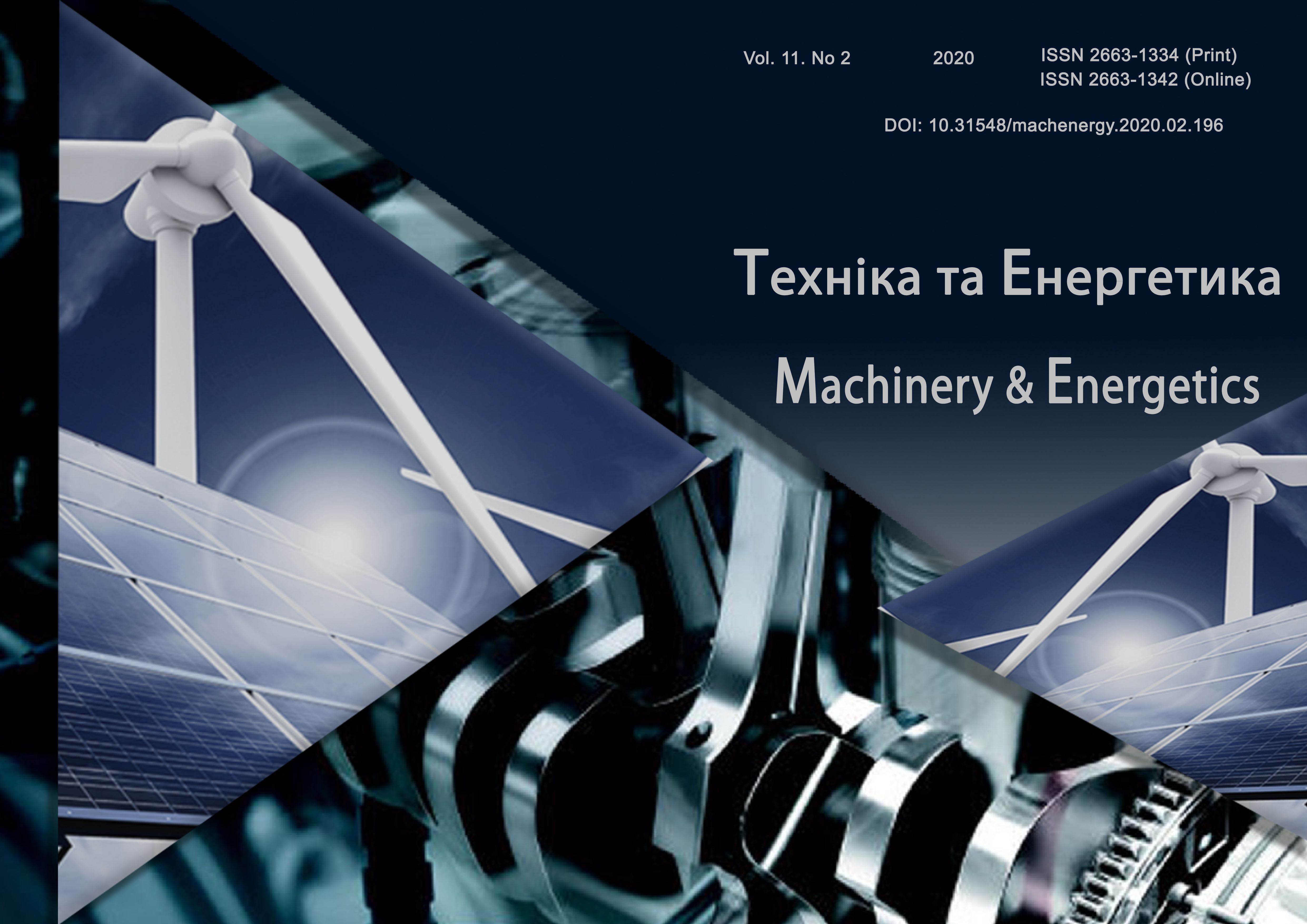Efficiency of producing biogas in agricultural enterprises
DOI:
https://doi.org/10.31548/machenergy2020.02.021Keywords:
biogas, biogas plant, cattle manure, substrate, cosubstrate, biogas yield, economic efficiency, payback period, cost.Abstract
The analysis of the economic efficiency of biogas production is carried out. It has been established that the economic efficiency of biogas plants operating on livestock waste currently operating in our country is very low. None of them have a satisfactory return on investment (at least ten years with a useful life of twenty years). Biogas yield during cattle manure fermentation is insignificant and according to the results of our research averages 0,7 l/hkg dry organic matter, which does not allow us to quickly pay off investment, even taking into account the "green" tariff for electricity produced from biogas. By adding a small amount of cosubstrate to the substrate based on cattle manure, the biogas yield, according to our studies, increases to 1,4 l/hkg dry organic matter and above. A study of the efficiency of biogas production in agricultural enterprises was carried out on the example of a model farm with a herd of 1000 head of cattle (500 head of dairy cows and 500 head of young and heifers). The dependence of specific capital costs for the construction of a biogas complex on its capacity has been established. Since agricultural enterprises have limited access to cheap, high-performance cosubstrates, which can significantly increase biogas output when cattle manure is fermented, it is advisable to introduce processing industries, for example, processing milk into dairy products and producing starch from potatoes, which are grown here. The waste from these processing plants is able to fully provide the biogas plant with high-performance cosubstrates, which will make it possible to obtain a payback period of the biogas plant at the level of 6,4 years.References
Kernasyuk Yu.V. (2019). Potential for biogas production in the livestock sector of Ukraine. Food resources. 12, 202-209.
https://doi.org/10.31073/foodresources2019-12-21
Kuharets S. M., Golub G. A. , Medvedsky O. V., Lozovy A. S. (2017). Directions of use of biogas plants in the conditions of agricultural production. Proceedings from I All-Ukrainian Scientific and Practical Conference «Bioenergy systems in agricultural production». (pp. 4-11). Zhytomyr [in Ukrainian]
Kernasyuk Yu.V. (2010). Scientific and methodological approaches to determining the cost of production and economic efficiency of bioenergy manure utilization. Scientific papers of Kirovograd National Technical University. 17, 164-171.
Doronin A. V. (2015). Efficiency of biogas production in agricultural enterprises of the cattle breeding industry of Ukraine. Scientific Bulletin of Kherson State University. 11 (3), 52-55.
Kernasyuk Yu.V. (2010). Assessment of the biogas energy potential of the livestock sector in agricultural enterprises. AgroInСom. 4-6, 46-49.
Kernasyuk Yu.V. (2013). Biogas alternative to the development of agro-industrial complex of Ukraine. Agribusiness today. 18, 50-53.
Polishchuk V. M., Dubrovin V. O., Dragnev S. V., Lobodko M. M., Dubrovina O. V. (2013). Processes and devices of biotechnological industries. Part 2. Determination of biomass manure output during cattle and poultry keeping: methodical instructions for laboratory work in the disciplines "Processes and apparatus of biotechnological production" for students of agricultural higher educational establishments 3-4 levels of accreditation of educational and qualification level "Master's degree103 "3 "Mechanization of agriculture". Kyiv: AgrarMediaGroup, 20.
Waste Management. (2007). Saint Petersburg: Integral. 576.
Statistical Yearbook of Ukraine for 2016. (2017). Kyiv: State Statistics Service of Ukraine. 612.
Sokolova Z. S., Lakomova L. I., Tinyakov V. G. (1992). Technology of cheese and cheese products. Moscow: Agropromizdat, 335.
Merisaar M. G. (1991). Disposal of waste from the potato industry for feeding farm animals. Extended abstract of candidate's thesis. Tartu. 24.
Dyshlyuk L. S., Asyakina L. K., Karchin K. V., Zimina M. I. (2014). Study of the chemical composition and safety indicators of potato waste. Modern problems of science and education, 3. Retrieved from https://www.science-education.ru/ru/article/view?id=13587 [in Ukrainian].
Pylypaka, S.F., Nesvidomin, V.M., Klendii, M.B., Rogovskii, I.L., Kresan, T.A., Trokhaniak, V.I. (2019). Conveyance of a particle by a vertical screw, which is limited by a coaxial fixed cylinder. Bulletin of the Karaganda University - Mathematics. Vol. 95. Issue 3. 108-118. WoS. https://doi.org/10.31489/2019M2/108-119
Aulin V., Hrynkiv A., Lysenko S., Rohovskii I., Chernovol M., Lyashuk O., Zamota T. (2019). Studying truck transmission oils using the method of thermal-oxidative stability during vehicle operation. Eastern-European Journal of Enterprise Technologies. Vol. 1. № 1/6 (97). 6-12.
Downloads
Published
Issue
Section
License
Relationship between right holders and users shall be governed by the terms of the license Creative Commons Attribution – non-commercial – Distribution On Same Conditions 4.0 international (CC BY-NC-SA 4.0):https://creativecommons.org/licenses/by-nc-sa/4.0/deed.uk
Authors who publish with this journal agree to the following terms:
- Authors retain copyright and grant the journal right of first publication with the work simultaneously licensed under a Creative Commons Attribution License that allows others to share the work with an acknowledgement of the work's authorship and initial publication in this journal.
- Authors are able to enter into separate, additional contractual arrangements for the non-exclusive distribution of the journal's published version of the work (e.g., post it to an institutional repository or publish it in a book), with an acknowledgement of its initial publication in this journal.
- Authors are permitted and encouraged to post their work online (e.g., in institutional repositories or on their website) prior to and during the submission process, as it can lead to productive exchanges, as well as earlier and greater citation of published work (See The Effect of Open Access).

